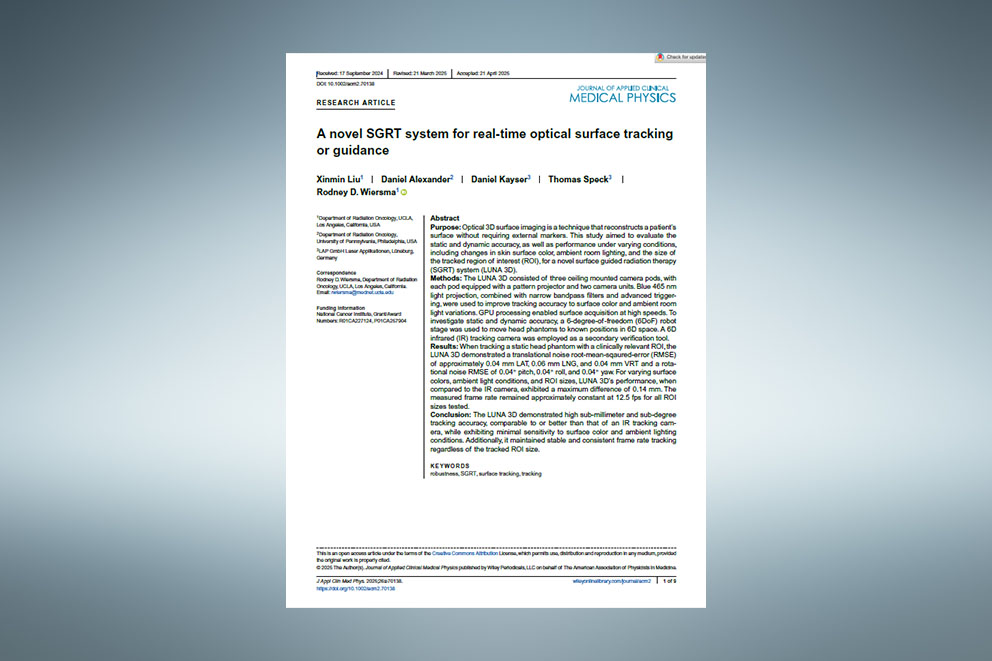A novel SGRT system for real-time optical surface tracking or guidance
Authors
Xinmin Liu, Department of Radiation Oncology, UCLA,Los Angeles, California, USA
Daniel Alexander, Department of Radiation Oncology,University of Pennsylvania, Philadelphia, USA
Daniel Kayser, LAP GmbH Laser Applikationen, Lüneburg,Germany
Thomas Speck, LAP GmbH Laser Applikationen, Lüneburg,Germany
Rodney D. Wiersma, Department of Radiation Oncology, UCLA,Los Angeles, California, USA
Abstract
Purpose
Optical 3D surface imaging is a technique that reconstructs a patient's surface without requiring external markers. This study aimed to evaluate the static and dynamic accuracy, as well as performance under varying conditions, including changes in skin surface color, ambient room lighting, and the size of the tracked region of interest (ROI), for a novel surface guided radiation therapy (SGRT) system (LUNA 3D).
Methods
The LUNA 3D consisted of three ceiling mounted camera pods, with each pod equipped with a pattern projector and two camera units. Blue 465 nm light projection, combined with narrow bandpass filters and advanced triggering, were used to improve tracking accuracy to surface color and ambient room light variations. GPU processing enabled surface acquisition at high speeds. To investigate static and dynamic accuracy, a 6-degree-of-freedom (6DoF) robot stage was used to move head phantoms to known positions in 6D space. A 6D infrared (IR) tracking camera was employed as a secondary verification tool.
Results
When tracking a static head phantom with a clinically relevant ROI, the LUNA 3D demonstrated a translational noise root-mean-sqaured-error (RMSE) of approximately 0.04 mm LAT, 0.06 mm LNG, and 0.04 mm VRT and a rotational noise RMSE of 0.04 pitch, 0.04 roll, and 0.04 yaw. For varying surface colors, ambient light conditions, and ROI sizes, LUNA 3D's performance, when compared to the IR camera, exhibited a maximum difference of 0.14 mm. The measured frame rate remained approximately constant at 12.5 fps for all ROI sizes tested.
Conclusion
The LUNA 3D demonstrated high sub-millimeter and sub-degree tracking accuracy, comparable to or better than that of an IR tracking camera, while exhibiting minimal sensitivity to surface color and ambient lighting conditions. Additionally, it maintained stable and consistent frame rate tracking regardless of the tracked ROI size.

